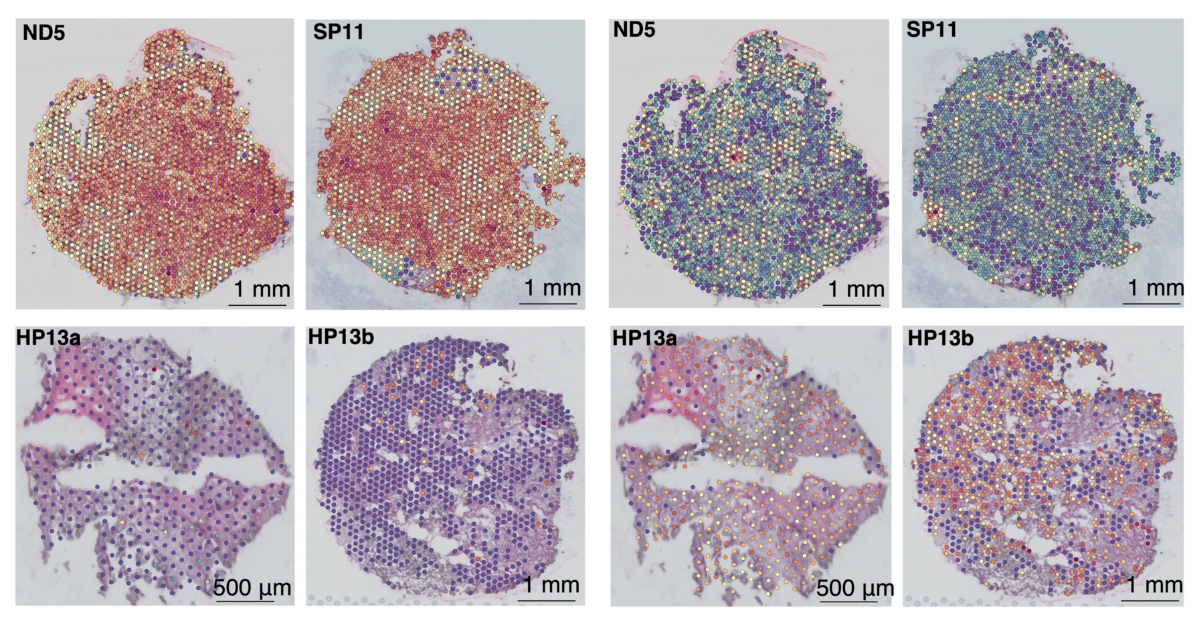The human microbiome consists of all the bacteria, viruses, and fungi that live in or on the body. Numerous studies have shown that these naturally occurring microbes are important for human health but can contribute to disease, especially when their numbers or types are out of balance.
Researchers are also studying microbes associated with placentas. A team of scientists funded by NICHD through the Human Placenta Project has been working to study potential placenta-associated microbes.

Credit: Figure 4, Barrozo et al., Med. (2023)
Understanding the Placenta and Microbes
In one of their early studies, the team of researchers led by Kjersti Aagaard, M.D., Ph.D., compared complete sets of genomes (i.e., metagenomes) found in placenta samples from preterm and term births, including some pregnancies with a bacterial infection called chorioamnionitis. The group found distinct differences in different groups of bacteria and their metabolic functions. These differences were also accompanied by various types of inflammation and immune signals.
In a follow-up study, the team visualized and sequenced placenta-associated microbes in more samples. The researchers used a variety of experimental techniques to look for and measure microbes in the placental architecture of term and preterm births. They found few but consistently visible bacteria in the placental tissue samples, calling these areas “placental niches.” Additionally, Aagaard’s team joined with other investigators, such as Todd Treangen, Ph.D., M.Sc., at Rice University, to develop computational tools that could pick up the rarest strains of bacteria and viruses and distinguish these signals from contaminant sequences in a lab or a natural environment.
The researchers are also interested in identifying what exposures in pregnancy, other than chorioamnionitis, could shape the microbes that are unique to different body sites. They reviewed human and animal studies to better describe how several factors, such as maternal and newborn diet and feeding, antibiotics, and cesarean delivery, might affect microbiome communities throughout pregnancy.
Studying the Placenta and COVID-19 Infection
To explore which genes were turned on and which were turned off in these placental niches, Aagaard’s team has turned to highly sensitive “spatial transcriptomics” approaches and provided insight into COVID-19 infections during pregnancy. The team evaluated placental samples from pregnant women who tested positive for infection and found that some, but not all, contained placental niches with SARS-CoV-2.
The researchers created a placental transcriptomics “atlas” that mapped the location of niches, as well as the types of immune cells and immune signals found in the niches and in surrounding tissue. For example, the team observed that niches with virus had pro-inflammatory signals and pro-inflammatory immune cells, while placentas without viral niches were generally non-inflammatory.
Aagaard’s team speculates that these niches are a fundamental molecular means of keeping inflammation confined in placental microenvironments—a containment strategy that helps stave off widespread and detrimental swelling in the placenta. The researchers also postulate that similar mechanisms play a key role in other similarly sparse microbial communities where there is little or no visible inflammation.
Learn more about the team
Principal Investigator(s):
Learn more about the HPP-funded project:
Source of the Placental Microbiome
 BACK TO TOP
BACK TO TOP